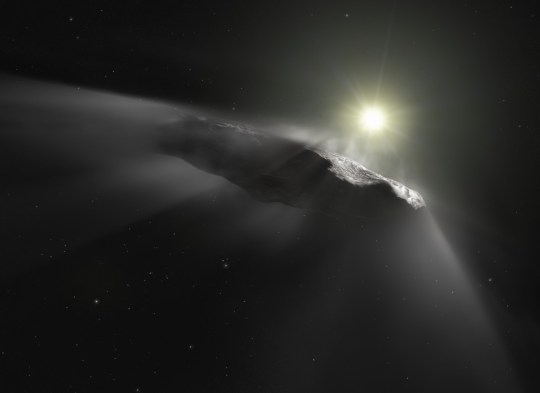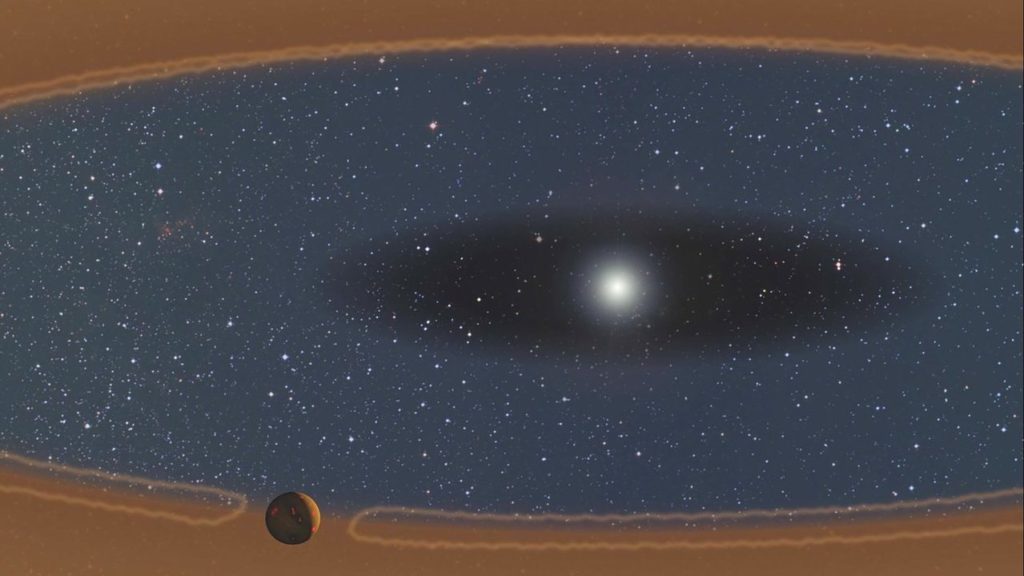Cosmologists have utilized NASA’s Hubble Space Telescope to catch new pictures of comet 2I/Borisov, the second affirmed interstellar item to be found in our Solar System, looking for a portion of its most prominent mysteries.
Driven by David Jewitt from the University of California, Los Angeles, a group has been utilizing the intensity of Hubble to picture the comet found in late August 2017 as it advances into the Solar System. Pictures were assumed the evening of Saturday, October 12 on the initial four of seven circles of the telescope assigned to this specific perception.
The pictures affirm a considerable lot of the subtleties we’ve known up until this point. The item is unmistakably a comet, with a lot of residue and gas being discharged from its surface. As it draws nearer to the Sun we are anticipating that this movement should increment, topping on December 7 when it makes its nearest way to deal with the Sun at around multiple times the Earth-Sun separation, or two AU (cosmic units).
Be that as it may, Jewitt and his group will utilize these pictures to attempt to work out the size of the core of the comet, which is the bad-to-the-bone around which the extreme lethargies of residue and gas twirls. Right now evaluates for the comet’s size range from around 700 meters to a few kilometers, and understanding it could reveal to us progressively about how these items structure and advance.

Comet 2I/Borisov is known to have started from another nearby planetary group, in view of its direction through our very own Solar System that is unbound to our Sun. While some provisional endeavors have been made to pinpoint its beginning, proposing a framework called Kruger-60 around 13 light-years away, the complexities associated with mapping back this direction in time mean we may never know without a doubt.
Be that as it may, concentrating the item could give us our best ever understanding into an outsider close planetary system. Our first interstellar guest, the space rock like ‘Oumuamua, was seen in late 2017 on out of the Solar System, giving us only weeks to watch it. This, combined with its lesser action, implies a considerable lot of its mysteries went unfamiliar.
Comet 2I/Borisov then again will top in action in under two months, while it is relied upon to stay noticeable in our night skies for about a year. Beside learning its size, shape, and revolution speed, cosmologists are additionally planning to work out what it is made of – including searching for how much water the comet’s frosts hold, if much by any stretch of the imagination. Some uncommon comets in our Solar System are abnormally wealthy in carbon monoxide, for instance.
Right now the comet looks simply like some other comet in our very own Solar System, an entrancing disclosure in itself that may propose different frameworks are genuinely comparative. Comets, the cold leftovers of a planetary framework’s development, have for quite some time been believed to be potential bearers of water and even the structure squares of life to youthful protoplanets in a star framework.
So comet 2I/Borisov speaks to a gigantically energizing open door for stargazers and non-space experts the same. It will give us our most noteworthy ever look into an outsider nearby planetary group, and combined with progressing investigation into exoplanets, could reveal to us progressively about whether universes like Earth are uncommon or basic known to man.
These most recent pictures from Hubble give us an intriguing new knowledge into this interstellar wonder. With a large number of the world’s most dominant telescopes additionally preparing their eyes toward its, and its amazing minute in the Sun’s spotlight not far away, its privileged insights won’t stay obscure for any longer.
Disclaimer: The views, suggestions, and opinions expressed here are the sole responsibility of the experts. No State Today USA journalist was involved in the writing and production of this article.
